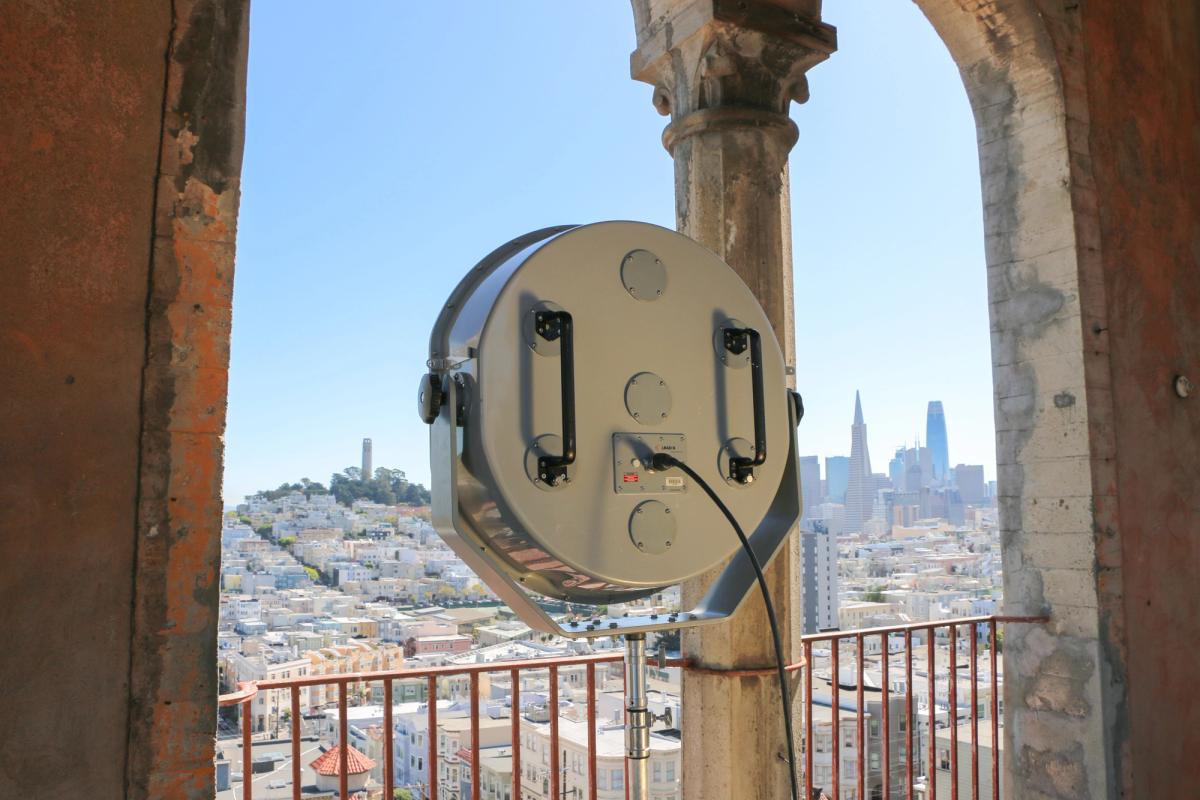In San Francisco, some of the world’s most expensive real estate is sinking into the ground. When and if this apocalyptic scenario occurs, the arts collective Postcommodity will be ready with a perfect soundtrack for the destruction.
The city of San Francisco is largely built on “reclaimed land”, or man-made landfill created from rubble and detritus covering the naturally marshy ground of the Bay Area. Because of its silty composition, such landfill is prone to liquefaction during earthquakes, a process that can convert solid foundations into quicksand in a matter of seconds. This has not stopped developers from building in the city, especially since the technology boom that has sent housing prices in the area soaring.
Take for example the 58-storey residential Millennium Tower in downtown San Francisco, where a penthouse apartment sold for $13m. Since its completion in 2008, the skyscraper has sunk 18 inches into the ground and developed 14 inches of lean. In September, the city endorsed a $100 million plan to fix the building’s foundations, which experts believe will require 52 steel piles drilled deep into the bedrock to fix. The agreement could set a precedent for other buildings in the area that may face similar sinking problems in the future.

Millennium Tower Photo by Robert Canali, 2019. Image courtesy of the San Francisco Art Institute.
For their sound installation The Point of Final Collapse (2019), Postcommodity—the artists Cristóbal Martínez and Kade L. Twist—deployed a computer algorithm to parse data representing the sinking tower’s movement. The indigenous collective then mapped any tremors and height disparities to what they describe as “healing ASMR audio and soothing binaural beats”. The contradiction between destruction and relaxation captures the cognitive dissonance that exists between the precarity of San Francisco’s infrastructure and the beauty of its surroundings. The work “renders legible the logics of technocracy and capitalism which encode fear, desire, and the inability for the greater public to rationalise and control systems of power,” the collective says in a statement.
The project will remain on view at the San Francisco Art Institute (SFAI) from 15 November until the Millennium Tower is fixed or torn down, according to press materials. The installation on the school’s campus includes long range acoustic devices—often used by police for crowd control as well as in emergency alert systems—that will broadcast the sound piece to the surrounding neighbourhoods at 5pm each day.
“The Point of Final Collapse will transform how we think about today’s urban life and structures,” says Gordon Knox, SFAI president, in a statement. “Postcommodity never fails to deliver a deeper view and this project will do exactly that.”
Importantly, Postcommodity sees the political issues it is tackling in San Francisco and elsewhere as inextricably connected to problems in the art world. “Our project in San Francisco is yet another chapter in our investigation into systems of complexity,” Martínez says. “The Millennium Tower will inevitably fall, be demolished, or it will need to be fixed. The same could be said for the art world where a lot of the diversity we are seeing is tokenism.”


